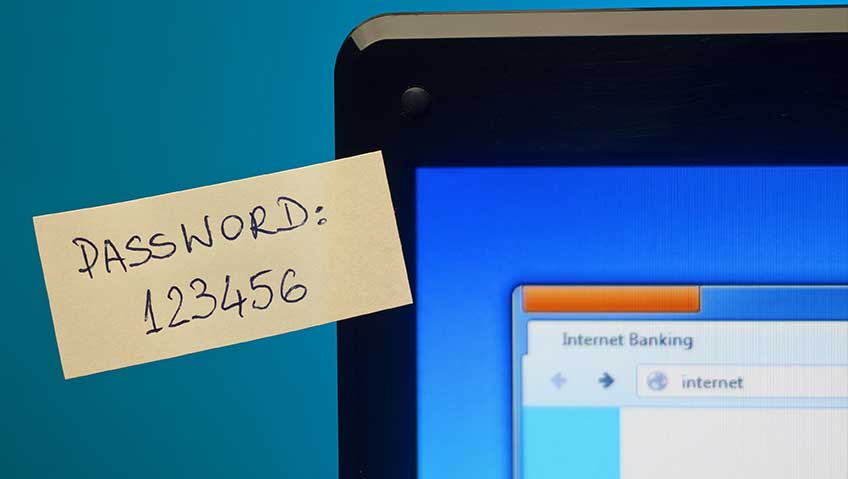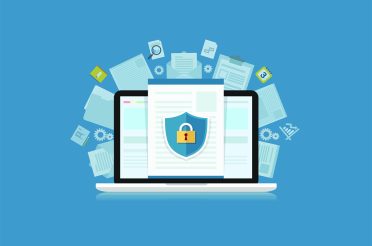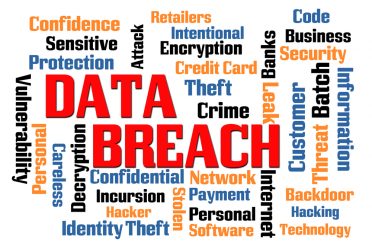You can’t address what you can’t see, or as the management guru Peter Drucker would famously say, “You can’t manage, what you don’t measure”. You can’t measure it, if you can’t see it, so let’s shine a light on these concealed dangers so that you can proactively safeguard your business against possible cyber threats.
Here are some of the most common cybersecurity points of risk which businesses might not consider.
Outdated Software
Performing updates is near the bottom of most people’s lists, is boring and requires discipline, but allowing outdated software to stay is an open invitation to cybercriminals.
When software providers roll out updates, they frequently incorporate important security fixes, and these fixes address vulnerabilities that criminals can capitalise on. Apply these updates and do not allow obsolete software to become a gateway to the inner workings of your business.
Weak Passwords: A Favourite Of Cybercriminals
If your passwords aren’t strong, you are leaving the cyber door to your business unlocked, for anyone to enter. Employing easy to remember passwords like “password” or “123456” is an open invitation to hackers.
Instead, use creative and distinct passwords, and give long passphrases a go. . The inclusion of uppercase and lowercase letters, numbers, and special characters is recommended, as is making your passwords 12, 16 or more characters long. Password managers are useful for generating and storing complex passwords.
If you are a business owner or IT member you can’t assume that employees will follow these guidelines, so establish parameters for password creation, and consider implementing measures that compel the use of a strong password.
Unsecured Wi-Fi: Another Point Of Potential Access
Unsecured Wi-Fi is another point of access that hackers can use to gain access to sensitive information.
To enhance your online security, first, ensure that your Wi-Fi network is password-protected. Second, make certain that your router utilises at leastWPA2 or WPA3 encryption protocols, to provide fundamental modern layers of protection. And lastly, seriously give consideration to using a VPN or implementing principles recommended in a Zero Trust Network Access (ZTNA) framework. It will assist with safeguarding your sensitive data.
A Lack Of Employee Training
When it comes to cybersecurity, employees can be the best defence or greatest vulnerability for any business, and research from Harvard University showed that human error was the cause of 85% of data breaches.
Without adequate training, staff will most likely unintentionally fall foul of phishing scams, or inadvertently disclose sensitive information. Therefore, it is important to regularly provide education opportunities to employees, and to ensure that they are well-versed in the practical application of best practices.
Basic education can include:
- Avoiding suspicious websites
- Identifying phishing emails
- Using secure file-sharing methods
Not Backing Up Data
A situation where your data is corrupted or missing altogether is a disturbing scenario, and without regular data backups, businesses expose themselves to significant risk. Data loss can occur due to hardware failures, ransomware attacks, or something else unforeseen.
A good course of action to is to embrace the 3-2-1 rule: keep at least 3 copies of your data stored on 2 different physical or online locations, with 1 copy stored offsite securely. And as an extra precaution, ensure your backup storage is immutable (I.e., can’t be tampered with) and regularly test recovery of your backups to ensure that they are functioning and that you can access them.
Not Embracing Multi-Factor Authentication
Relying on only a password to protect your accounts is relying on sub-standard defence.
By adding Multi-Factor Authentication, you add an extra layer of protection. This can come in the form of a short-lived one-time code, or other instructions sent to a separate secure location, which in turn, will make it more difficult for cybercriminals to gain access.
Ignoring The Security Of Mobile Devices
Mobile devices have become office tools, and they come with their own security vulnerabilities. You must ensure all devices associated with a business are protected with passcodes or biometric locks. Additionally, the adoption of Mobile Device Management (MDM) solutions can further strengthen a device. These solutions can include stringent security protocols, remote data wiping, and the consistentapplication of updates.
The Threat and impact of Shadow IT
Shadow IT refers to the unauthorised use of outside applications and software within your business environment. While employees may be unaware of the effects of their actions, unverified applications and software can present substantial security threats.
To mitigate this risk, draft a usage policy that matches your business requirements, and implement it with application control software. . It will also be helpful for your IT team toundertake a periodic system audit to determine if any instances of shadow IT are occurring and perform remedial actions.
Failure To Retain An Incident Response Plan
Even with precautions in place, security related incidents can still occur, and without an adequate incident response plan, such an incident can put your business in a perilous position.
A comprehensive incident response plan should be in place at all times, and it should outline the response need to key criteria, such as how to detect, respond, and recover swiftly from any security incident. To ensure preparedness, regularly test and update your response plan to make sure that it is effective. The last thing you want to do in an emergency is to have to make it up as you go, that’s a recipe for a disaster.
Is Your Business Exposed To Hidden Cybersecurity Risks?
Cybersecurity risks and threats to business can be unknown and unseen. As a cybersecurity specialist, Aryon can conduct a comprehensive risk and review of your business to ensure that its on and offline security is the best that it can be.
Contact us today for further information regarding this.








